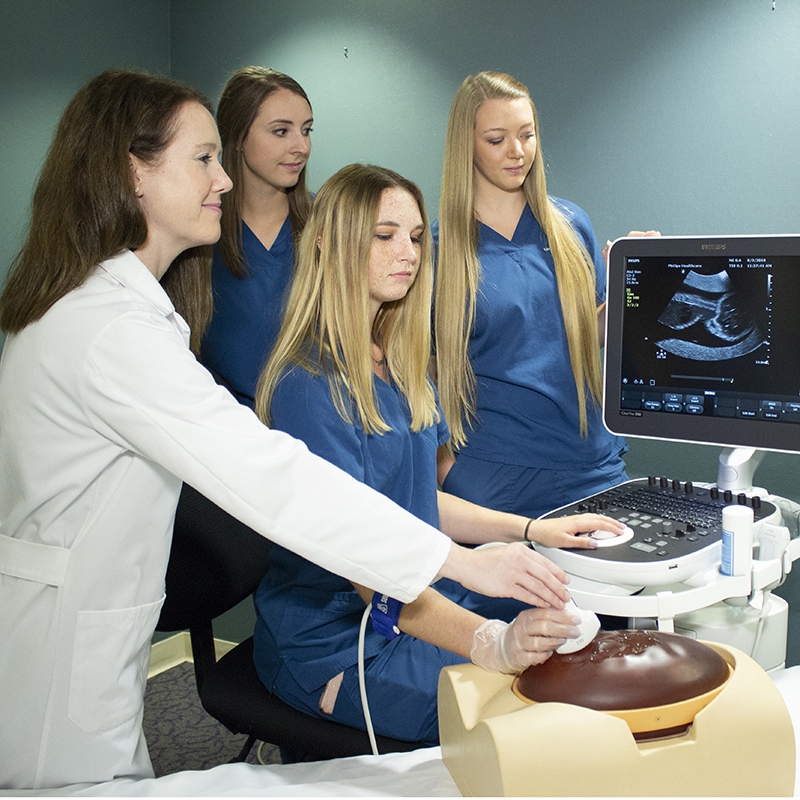What is a diagnostic medical sonographer?
The Profession

A sonographer is a healthcare professional who utilizes their technical expertise, knowledge of human anatomy, and the physical principles of ultrasound to produce diagnostic images of the body.
Ultrasound is used to evaluate many parts of the body, including the heart, abdomen, blood vessels, developing fetus, superficial body structures, and neonatal brains. The sound waves used to obtain these images are at a frequency above the range of human hearing. Sonographers create images of structures by scanning the patient with a transducer that emits high frequency sound waves. The images are interpreted by a physician who provides the medical diagnosis.
The professional qualities and responsibilities needed to be successful in this profession include the ability to:
- Interact compassionately and effectively with people who range from healthy to critically ill
- Obtain and record an accurate medical history
- Operate high-tech equipment to create and interpret images used by physicians to make a medical diagnosis
- Use independent judgment and critical thinking to extend the scope of the procedure according to the diagnostic findings
- Analyze technical information
- Provide an oral or written summary of the technical findings to the physician for medical diagnosis
- Collaborate and communicate with other members of the health care team
Starting wage: $64,000
Middle-range wage: $75,920
Job after graduation from our UNMC sonography program: 100%
Career information from the Society of Diagnostic Medical Sonography:
Professional Organization Links
Most health care professions have professional organizations at state and national levels. These provide valuable information for prospective students as well as working professionals.